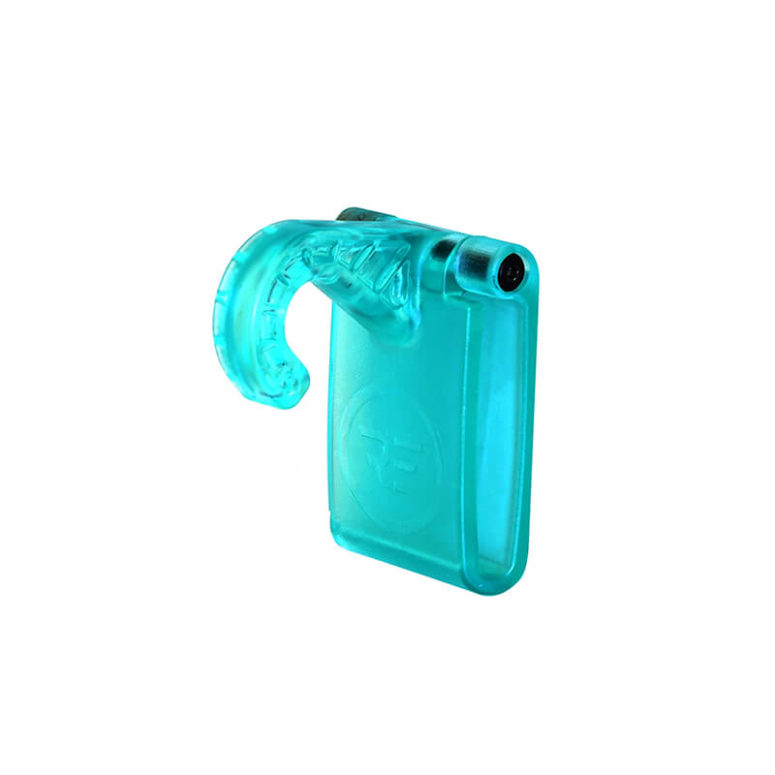

When you purchase gear through links on our site, we may earn a small commission. Here’s why you can trust our tests and our affiliate partner.

Ride Engine are an innovative bunch. Since dropping their very first wingfoiling-dedicated harness, the Vinaka, Ride Engine have led the charge on a light weight and low profile solution for wingers who want to hook in. That said, the California firm’s new Nug takes simplicity to the next level by eliminating 90% of the bulk in a harness. As the old adage goes, minimalism is a double-edged sword…
As I eluded, the Nug is an attachable harness hook rather than an entire harness unit. Coming in at only 3 inches/7.5cm square, the piece itself is an eye-catching piece of transparent blue plastic. Beefy but light, it has the aura of a 3D-printed part. The hook looks unlike anything we’ve seen on traditional harnesses, and its short, stout outline appears a bit small for the job at first glance. A through bolt (which requires a hex or Torx driver to tighten/loosen) closes the system around your waist webbing of choice, and should provide fairly adequate room for thicker material. The Nug felt a little loose around the thin webbing of my Ozone waist leash, but that wasn’t a dealbreaker on the water. If anything, it was easy to push out of the way when I didn’t need it, which is the idea.
Latching the Nug onto your webbing of choice takes less than a minute. The process is self-evident enough — just don’t put it on backwards and upside down like I did! If you’re using a waist leash, you may find the occasional interference between the leash line and the Nug when hooked in. I pre-adjust my waist leash setup according to my stance so that the hook stays front and center in spite of tacking, jibing, etc. Under load, the Nug definitely feels looser and more prone to jumping around with gusts than a traditional harness, but I suspect this is more a result of my particular waist leash than the Nug itself. I find this issue is easily resolved by using the Nug in lighter, less gusty conditions. Hooking in and unhooking are, for the most part, no different than with a traditional harness. If your harness line is thin and not stiff (the case with many wings presently), prepare for a gentle learning curve when hooking in. Successfully swinging your line into the small Nug is a little more challenging than with a large metal hook. And yes, once hooked in, the line stays there.
My main comment when comparing the Nug with, say, a Vinaka, is the importance of the rest of the system. I can’t say for sure how various waist leash buckles will handle the sorts of unusual loads associated with being hooked in, especially in gusty conditions or with a heavier rider. Webbing thickness and diameter will also be a huge factor in whether or not the Nug feels good to you. These are the tradeoffs of an add-on design concept. All that said, I found the Nug to be a brilliant solution to my needs as a casual wingfoiler. I like mowing the lawn on the way back uphill from downwind runs. I spend most of my sessions in light to moderate winds. I tend to ride in cold climates and my hands get numb quickly without help from a harness. I don’t want to add any unnecessarily bulky gear to my bag. Saving money is a big plus, too (the Nug retails for +/- $20 USD). If any of that sounds like you, I’d recommend giving the Nug a try. Just make sure you’ve got a solid waist leash to stick it to. KVS